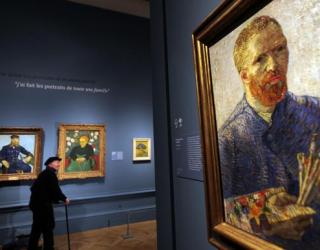Scientists reveal the reason behind Vincent Van Gogh's paintings turning white

Scientists at the University of Antwerp are moving closer to find out why the red lead paint in Van Gogh's paintings is fading.
According to the studies, the yellow color of Van Gogh’s paintings is turning brown. It has been discovered that the red lead paint is turning into white when it’s exposed to light.
In order to investigate what is happening to the colors, the researchers used X-rays. They found that the red lead is covered in ‘degradation product’ and a chemical plumbonacrite is causing chemical buildup when light is shined upon it.
The Belgium researchers took a tiny white piece of van Gogh's Wheat stack under a cloudy sky to gauge how red lead was changing colors.
They examined the white speck under a microscope and fired x-ray lasers through the sample to determine what minerals it contained. The researchers mentioned that plumbonacrite has never been reported in a painting dating from before the mid-20th century.
However, they noted that the Renior's 1883's Madame Léon Clapisson painting is not fading due to the same reason. The red color used in that painting comes from an insect known as a cochineal.
When the color is exposed to light, it separates it's organic and inorganic compounds and that turns the red color in the Renior's work into a mellow gray color. Now scientists hope to develop a way in which will help to restore red color in paintings.
Crystal Bridges Museum is holding a new exhibit with 73 artists from the late nineteenth century. The exhibit consists of paintings made by Vincent van Gogh, Pablo Picasso, Georgia O'Keefe, Salvador Dali, and Mark Rothko. All these works were selected from a collection of the Albright-Knox Art Gallery located in Buffalo, New York.



